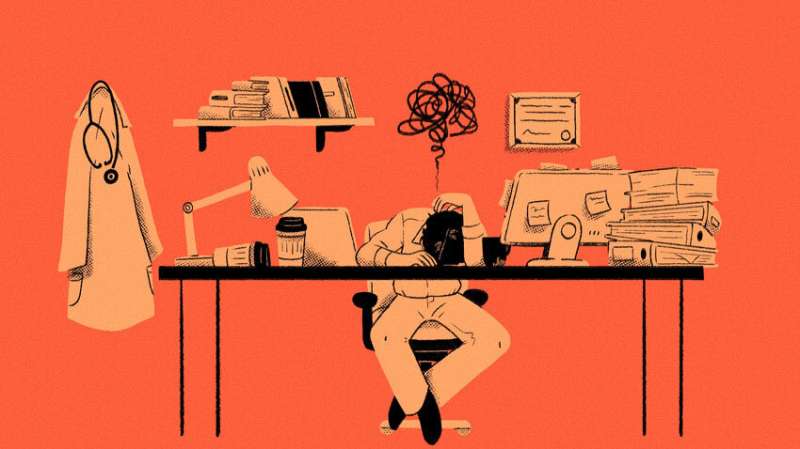The history of physician burnout

According to a 2022Medscapepoll, burnout rates among physicians are steadily increasing. The publication defines burnout as a "long-term, unresolvable job-related stress that leads to exhaustion, cynicism and feelings of detachment."
This mental health concern endemic tomedical professionalsinspired Sam Schotland, M.A., a second-year medical student at the University of Michigan Medical School and Ph.D. student studying thehistory of scienceand medicine at Yale University, to co-author an article entitled, "Obstacles to Physicians' Emotional Health—Lessons from History." The piece appeared in theNew England Journal of Medicineearlier this year.
"While the ongoing pandemic has exposed the incredible amount of stress put upon ourhealth care providers, many key obstacles existed pre-pandemic when it comes to improving the mental health of our physicians," he said. "In our paper, we highlight three significant barriers that have historically prevented said improvements and also, suggest some solutions to these pervasive problems."
Schotland and his co-authors, Agnes Arnold‑Forster, Ph.D., and Jacob D. Moses, Ph.D., define three "historical obstacles" to the well-being of doctors. They include:
- Medical exceptionalism, or regarding medicine as an extraordinarily self-sacrificing profession.
- Medicalization, or considering physicians who have mental health or substance use problems to be sick or unwell.
- Individual responsibility, or believing physicians are personally obliged to maintain their own wellness.
Schotland notes that each of these barriers continues to persist because of longstanding and oftentimes deep-seated societal issues.
"For example, things like social privilege and prestige are often associated with doctors and contribute to the notion of medical exceptionalism," he said. "This, in turn leads to institutional expectations that can ultimately mask harmful practices and policies geared towards physicians. In addition, medicalization continues to persist because of stigmas associated withmental illnessand substance abuse. And individual responsibility can lead to stagnant work conditions, as doctors are essentially tasked with helping themselves with no outside help."
Schotland and his peers go on to propose several structural solutions to each obstacle, reinforcing the importance of combatting the "historical tendency to hold physicians personally responsible for tolerating occupational stress."
"We recommend reforms to medical curriculum to empowermedical studentsand house staff to better understand their rights and responsibilities in the clinical environment, ensuring duty hour restrictions and workplace protections, and providingmental healthsupport as a part of the occupational health services of hospitals and otherhealth care facilities,”他说。“这些类型的干预的power to shift responsibility from individual physicians to institutions."
Schotland adds that when health care facilities prioritizephysicianwell-being as highly as they prioritize the patient experience, for example, this can lead to bigger and better things.
"History provides us with a template, as well as a way for thinking through many of these issues. But ultimately, happy doctors make for a better quality of care," he said. "At the end of the day, physicians are workers, who absolutely deserve the same basic rights and adequate working conditions as other professions. By finally reckoning with massive structural problems, policies withinhealth caremay finally change. And this can lead to an overall better future for us all."


















